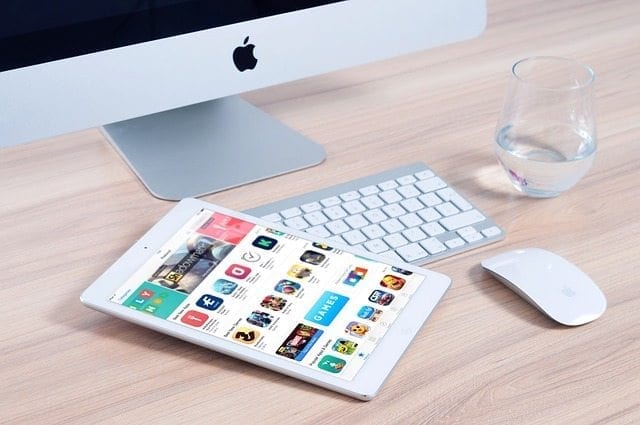4 Best Practices to Implement After a Successful App Pre-launch

Reading Time: 6 minutes
Just released your baby into the world? Before you pop the champagne, before you throw the confetti, hold on: unless you built your app just for fun, the real work has just begun.
See, if you want your app to vault to the top of the rankings, you can’t treat your app as an app. You have to treat it like a business. Launching the app is just the start of the business. We need to know how to attract and keep users, how to get found in app store search, and how to wring the most out of each process to survive the hectic, turbulent early days.
Trouble is, ranking isn’t always easy to figure out.
How does Apple rank its apps?
According to Ryan Charles, who worked on several big apps for Zagat and Care.com, mostly by a number of downloads and download velocity (times it has been downloaded over a time period).
- Ratings
- Number of ratings
- Install and uninstall rate
- Anonymized use stats
- Total downloads
- Download velocity
Bonus Content
|
After a Successful App Pre-launch
Yup, it’s a steep climb ahead. But worry not, because we put together a list of the most effective steps you can take right now to give your app a much-needed rocket boost.
1. Tell All Your Friends And Contacts About It
What are friends for? Helping your app post-launch of course!
Leveraging your existing network is an effective and easy way to get the first word out about your app launch. Simply email or message all your contacts with:
| Hey [First Name],
If you’re wondering where in the world I disappeared off to… It’s not Nepal. It’s not Bali. I was actually hunkered down in a corner of my apartment to build … an app! It connects you with people from around the world who can buy and ship you something not available in stores where you live. Backed with a peer rating system. [link to Android app] [link to iOS app] If you liked it, I would really appreciate it if you left a review! If you don’t need anything from somewhere like say the foothills of the Himalayas, I’d be forever thankful if you could share it with your social networks! |
Your friends sharing it with their networks and their friends sharing it with their networks can give your app that important pop after launch to give your app a chance at becoming the Next Hot Thing. Also, it takes a lot less work and powers of persuasion to get friends to share your launch app, in the beginning, freeing up precious time to work on other aspects of your launch.
2. Keyword Optimize Your App Title And Descriptions
App stores still rely heavily on keyword usage in their search results. So make sure you’re ranking for the right results by conducting thorough keyword research.
Remember that the only way people who haven’t heard of you before is if your app comes up in results when they use search to find a solution to their problem.
Go Google Analytics > Acquisition > Search Engine Optimization > Queries to see what keywords people are searching for to find your site
- Use similar keywords to both titles and describe your app. For example, Lookout calls their app Lookout Security and Antivirus, not Lookout or Lookout Mobile Security:
- In their description, right at the top, they also describe using keywords the top problems their app solves:
- Lookout Security & Antivirus offers top-notch protection against mobile threats, phone loss, and theft.
- Treat your description like you’re writing sales copy, convincing someone to download your app. Also, take care not to over-promise what your app can do so disappointed users don’t quickly uninstall your app once they discover it cannot do their laundry and fold their clothes for them.
3. Create An In-App Notification Prompting Users To Leave A Review And Rate Your App
Reviews and ratings have a huge effect on whether new people decide to give your app a try or not, so make sure you are pulling all the stops to ask your current users to leave you one!
As the saying goes, ‘ask and you shall receive.’ Most people will leave a review, but not unless you gently nudge them to. So after a certain period of use, trigger a notification asking for reviews. This is how Twitter’s app jumped from a poor 2.5 stars in December 2012 to 4.5 in January 2013.
Remember that without asking normal users to leave reviews, typically the only people who care enough to are either raving fans or disappointed users. And disappointed users will outnumber raving fans in the reviews section because they’re more vocal.
4. Continually Optimize Your App Experience To Improve Your Retention Rates
If you’ve read our previous guide on app user retention, you may be still losing sleep over the scary stat that 58% of app users go by-bye in the first 30 days after they download your app. Before even mounting a major new user acquisition push, measure and optimize your user retention first. Retention can actually add more value in some growth stages than acquisition, and repeat customers are the key to higher revenues long-term.
App stores also take usage stats into consideration when ranking apps, so you don’t want to be leaking users before they can even learn to recognize your app icon amongst their 50+ others!
Here are some of the top reasons why your users may stop using your app – or completely forget it:
i) Value of app to them
- Does the app do what the user expected?
- How consistent is the experience?
- Is the UI easy to use?
- Does it solve their problems or desires?
- Does it avoid annoying them (such as intrusive ads, forced updates)?
ii) Trust and perception issues
- Slow or no responses to questions and customer service requests
- Asks for too many permissions that user deems necessary
- Performs actions without user consent or knowledge (example: sharing messages to their social media accounts)
- Unprofessional looking design
iii) Performance issues
- App drains battery
- App feels like it’s slowing the phone down
- The app takes a long time to load
- App UX poor or UI too unintuitive to get used to
- App crashes too often
‘No plan of battle,’ said Moltke, ‘ever survives contact with the enemy.’ You could say, ‘no product ever survives its first contact with a customer.’ As soon as you launch, you’ll discover 101 ways users don’t use your app as intended or your app doesn’t perform as intended.
That’s why immediately after you launch, you both actively reach out to your first users for honest feedback and make it extremely easy for them to contact you with feedback.
A. Create A Dedicated Tab In Your App To Collect Feedback
App added a dedicated Help section in their app where users can provide feedback:
We recommend making your feedback tab even more prominent in the beginning so users can see instantly it’s there. Also, give it a catchier name like Feedback.
Remember, app users don’t tend to go out of their way to provide you with feedback (unless they’re really angry and then you’ve got bigger problems!) which means you have to make it as easy as possible for you too.
B. Set Up In-App Notifications And Emails
With Moengage, you can send out feedback request email or in-app notification after they have met certain conditions like:
- Been active on your app for 3 weeks
- Used all the important features
For the email, here’s a great example from flowist:
| Subject: [First Name], can you do us a quick favor?
Hi [First Name], Great to have you onboard Flowist! We’ve been continually improving the tool to make writing way less forehead-meets-desk by automating a lot of the repetitive parts. As an early user, we’ve just turned on your God mode. This means you get to have a huge say over how the tool evolves as if you were building the dream tool for yourself! So we have 2 questions:
You can directly respond to this email. Thanks so much for sharing your insights! Signature, |
Key Takeaways
Getting the word out about your app is important after launch but more important is making sure the users who do try it are satisfied. Satisfied enough to keep using it, satisfied enough to share it with their network, satisfied enough to leave a good review about it.
There are a lot of apps that have soared into the stratosphere in their first few months, only to come crashing back down on earth because they focused more on creating buzz than backing it up with a superb user experience.
That’s why you have to solicit as much feedback as possible, especially in the beginning, to learn where and how you can improve the app. When it does pick up traction, having a solid app means that most of the new users you do gain will stay for a long time so you can devote acquisition efforts to growing, instead of trying to replace them.
*Featured Image Source
Want to know how brands like Bigbasket, Travelz, and Oyo Rooms use MoEngage Push Amplification to improve their push notification delivery rates? Learn more about push amplification here.
Here’s What You Can Read Next |







